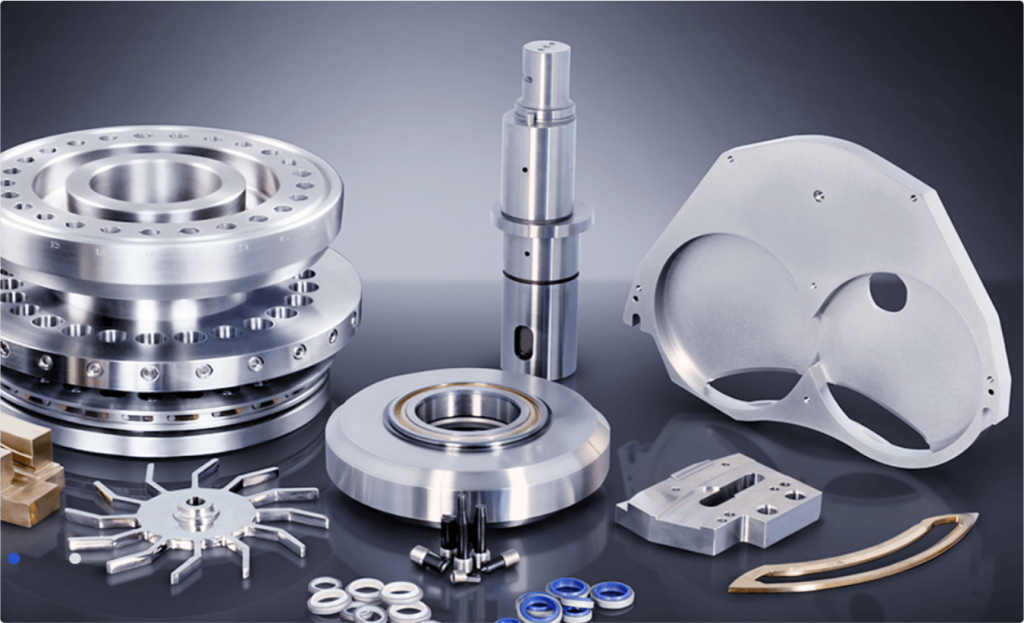CNC Computer Numerical Control technology has revolutionized the manufacturing sector by enhancing production through remarkable improvements in speed, power, and precision. Once reliant on manual labor and analog machinery, today’s factories and workshops are now equipped with cutting-edge CNC systems that streamline operations and significantly increase productivity. These systems are controlled by sophisticated computer software that dictates the movement of tools and machinery with unmatched accuracy, reducing human error and variability. This level of precision ensures that every component produced is consistent, reliable, and within tight tolerances vital for industries such as aerospace, automotive, and medical device manufacturing, where even the slightest deviation can compromise functionality and safety. One of the most notable benefits of CNC technology is the dramatic boost in production speed. Traditional machining processes required skilled operators to perform repetitive tasks manually, often resulting in slower production cycles. CNC machines, on the other hand, can run 24/7 with minimal supervision, dramatically cutting down the time needed to complete a batch of products.

By automating the entire machining process, companies can meet tight deadlines, increase output, and respond more quickly to changes in demand. Furthermore, CNC machines are capable of performing multiple operations such as drilling, milling, cutting, and turning in a single setup, further reducing the time and labor involved in part production. In addition to speed, Uneed CNC machines offer enhanced power that enables them to work with a wide range of materials, from soft plastics to the toughest metals. These machines are built to withstand the rigors of high-volume production while maintaining their performance and accuracy over time. This power not only increases throughput but also opens up new possibilities in product design and material selection. Manufacturers can now tackle more complex geometries and intricate features that were previously difficult or impossible to achieve with manual processes. The ability to easily replicate complex parts with consistent quality gives companies a competitive edge in innovation and customer satisfaction.
The precision of CNC machining also leads to significant cost savings over time. By minimizing waste material, reducing rework, and lowering the risk of defects, manufacturers can improve their overall efficiency and reduce production costs. Moreover, the digital nature of CNC programming allows for quick adjustments and prototyping, enabling faster innovation cycles. Design changes can be implemented rapidly, and new products can be brought to market faster without extensive retooling and verify is cnc machining hard. In conclusion, CNC technology has become an indispensable asset in modern manufacturing by delivering exceptional speed, power, and precision. It not only accelerates production and improves quality but also fosters innovation and adaptability in a highly competitive marketplace. As advancements in CNC software and hardware continue, manufacturers across industries can expect even greater capabilities and efficiencies in the years to come, solidifying CNC’s role as a cornerstone of industrial progress.
Empowering injury victims with legal knowledge and confidence is crucial in helping them navigate the often complex and intimidating world of personal injury law. When a person suffers an injury, whether from a car accident, slip and fall, medical malpractice, or any other unfortunate event, the immediate aftermath can be overwhelming. The physical, emotional, and financial toll of an injury can leave victims feeling powerless and unsure of their next steps. In such moments, the role of legal professionals is to not only provide expert representation but also to equip clients with the knowledge they need to make informed decisions about their cases. One of the first steps in empowering injury victims is educating them about their rights. Many people are unaware of the legal protections available to them, such as the right to seek compensation for medical bills, lost wages, pain and suffering, and other damages resulting from their injuries. By helping victims understand these rights, legal professionals give them the confidence to pursue the justice they deserve. Knowing that they are entitled to seek a fair resolution can relieve some of the anxiety and uncertainty that often accompanies personal injury cases.
In addition to understanding their rights, injury victims need to know the process of filing a claim, gathering evidence, and negotiating settlements. The legal system can seem like a maze, with its jargon, timelines, and procedures. With proper guidance, however, victims can approach the process with clarity and confidence. Legal professionals who take the time to explain each step of the journey and who offer support at every turn allow their clients to feel empowered, rather than overwhelmed. This understanding also reduces the fear of making mistakes or missing critical deadlines, which can otherwise lead to complications or unfavorable outcomes and click to investigate. Moreover, empowering injury victims goes beyond just providing legal knowledge. It is about offering a sense of security and encouragement during a time of vulnerability. Many injury victims struggle with self-doubt or feel as though their cases are not worth pursuing. Legal professionals who take the time to listen, show empathy, and build trust can reassure victims that their cases are worth fighting for. This emotional support, combined with legal expertise, allows victims to approach their situations with renewed strength and optimism.
Another important aspect of empowerment is the encouragement to seek medical care and document all aspects of the injury. By understanding how critical proper treatment is, and how it can affect the outcome of their case, victims are motivated to follow their doctor’s advice and keep detailed records of their medical journey. This proactive approach to healthcare not only aids in recovery but also helps build a stronger legal case. Victims are empowered to take control of their physical well-being, which in turn influences the success of their legal efforts. Ultimately, empowering injury victims with legal knowledge and confidence is about giving them the tools they need to regain control over their lives after an injury. With the right legal support, individuals can pursue fair compensation, recover from their injuries, and rebuild their lives. By combining education, emotional support, and a commitment to their clients’ success, legal professionals play a vital role in helping injury victims emerge from challenging circumstances stronger and more confident than ever before.
The internet has become the go-to resource for individuals seeking legal assistance, and without a strong online presence, even the most experienced firms risk being overlooked. Digital marketing enables law firms to connect with potential clients at every stage of their decision-making process, from initial research to final contact, by leveraging tools like search engine optimization SEO, pay-per-click PPC advertising, content marketing, and social media outreach. One of the most crucial elements in a law firm’s digital marketing arsenal is SEO. Optimizing a firm’s website and content for search engines ensures that the firm appears prominently when users search for legal services online. For example, targeting keywords like personal injury lawyer in City or family law attorney near me can help a firm rank higher in local search results, which are vital for client acquisition. Local SEO strategies, such as optimizing Google Business Profiles and acquiring reviews, further enhance visibility and credibility within a specific geographic area.

Content marketing is another powerful strategy that allows law firms to showcase their expertise and build trust with potential clients. Regularly publishing blog posts, FAQs, case studies, and informative articles helps answer common legal questions and demonstrates a firm’s knowledge and professionalism. This not only improves SEO but also encourages potential clients to engage with the firm. Educational content, when distributed via newsletters or downloadable guides, can also capture leads by prompting users to share their contact information in exchange for valuable insights. Paid advertising through platforms like Google Ads and social media can yield quick results and targeted exposure. PPC campaigns allow firms to bid on specific keywords and display ads to users actively searching for legal help. This method is particularly useful for high-stakes practice areas such as personal injury or criminal defense, where competition is intense and timely visibility can lead to significant client acquisition. Retargeting ads can also keep the firm top-of-mind for users who previously visited the website but did not take immediate action.
Social media platforms provide law firms with an opportunity to humanize their brand connect with their community and i thought about this. Platforms like LinkedIn, Facebook, and Instagram can be used to share success stories, community involvement, legal tips, and firm news, fostering engagement and trust. In addition, maintaining active social media profiles supports broader SEO efforts and allows for direct interaction with potential clients. In conclusion, digital marketing is not just an optional strategy for law firms it is essential in today’s digital-first world. By implementing a combination of SEO, content marketing, PPC advertising, and social media engagement, law firms can significantly enhance their online visibility, establish authority in their practice areas, and ultimately attract more qualified clients. As competition grows, firms that invest in a thoughtful and consistent digital marketing strategy will be far better positioned for long-term success.
After a vehicle collision, knowing your rights under current accident law is essential to ensure fair treatment and appropriate compensation. As a victim, you are legally entitled to seek damages if another party’s negligence caused the accident. This includes medical expenses, vehicle repair or replacement costs, lost wages, and compensation for pain and suffering. Immediately after an accident, you have the right to contact emergency services and file a police report, which serves as an important legal document in any future claims. You are not obligated to admit fault or provide a statement to the other party’s insurance company without consulting legal counsel. Importantly, you have the right to obtain a copy of the police report and any related medical records. These records can be crucial when establishing the sequence of events and the extent of your injuries. In many jurisdictions, accident law operates under comparative or contributory negligence rules. This means that if you are partially at fault, your compensation may be reduced by your percentage of fault, but you may still be eligible for a settlement.

You also have the right to consult and retain an attorney, who can help navigate the complexities of personal injury law and advocate on your behalf. An attorney can manage communication with insurance companies, gather evidence, and negotiate for a fair settlement. If a settlement cannot be reached, you retain the right to pursue legal action in civil court. There are statutes of limitations that set a deadline for filing a lawsuit typically ranging from one to three years so understanding the applicable timeline is crucial to preserve your legal rights. Medical treatment is another area where your rights are protected. You have the right to choose your own healthcare providers and receive necessary treatment for injuries sustained in the collision. In many cases, accident law allows victims to receive compensation for both current and anticipated future medical costs. In some jurisdictions, if you have personal injury protection PIP coverage, your insurance may pay for initial treatment regardless of fault, but this does not negate your right to seek damages from the responsible party.
Additionally, you are entitled to keep documentation of all medical visits and click here now, prescriptions, and rehabilitation efforts, as these help establish the severity and impact of your injuries. Accident law also protects you from insurance company tactics designed to minimize payouts. You are under no obligation to accept the first settlement offer or to sign any documents without understanding their implications. If your insurance company acts in bad faith such as unreasonably delaying payment or denying valid claims—you may have grounds to file a separate claim for damages against them. In sum, your rights following a vehicle collision encompass access to emergency care, protection from self-incrimination, legal representation, the ability to seek compensation, and safeguards against unfair insurance practices. Being informed about these rights empowers you to act with confidence and make decisions that protect your health, finances, and legal interests in the aftermath of an accident.
Full-service site development engineering for land and infrastructure projects involves a comprehensive approach to transforming raw land into a fully functional and sustainable environment ready for construction, occupancy, or public use. This process begins with extensive site analysis, including surveying, geotechnical investigations, and environmental assessments, which provide critical data about the land’s topography, soil composition, drainage patterns, and potential environmental constraints. These early evaluations guide the planning and design stages, ensuring that the project complies with local, state, and federal regulations while maximizing the land’s potential use. Civil engineers and development professionals collaborate to create detailed site plans that integrate infrastructure elements such as roadways, stormwater management systems, water and sewer lines, utility layouts, and erosion control measures. These designs are tailored to meet the unique challenges of each site, whether it involves steep terrain, wetland areas, or urban infill.

The permitting process is a critical component of site development engineering. Engineers work closely with governmental agencies and stakeholders to secure all necessary approvals and clearances before construction begins. This coordination helps avoid delays, minimize costs, and prevent future issues. Once permits are secured, the project transitions into the construction phase, where engineers continue to provide oversight and support through construction administration services. These may include on-site inspections, coordination with contractors, quality assurance, and adherence to design specifications and discover this info here. Throughout construction, the focus remains on ensuring that all systems such as drainage, road grading, utilities, and retaining structures are installed correctly and function as intended. Engineers may revise plans as needed to adapt to unforeseen site conditions or changes in project scope. Additionally, modern site development often incorporates green infrastructure solutions such as bioswales, permeable pavements, and native landscaping to manage stormwater naturally and enhance environmental resilience.
Upon completion, the site must pass a series of inspections to confirm that it meets safety and operational standards. Engineers compile as-built drawings and final documentation to satisfy regulatory requirements and assist with future maintenance. The goal of full-service site development engineering is not only to deliver a buildable and efficient site but also to ensure long-term viability and integration with existing infrastructure systems. This holistic approach supports developers, municipalities, and property owners by turning conceptual plans into successful, well-functioning realities that serve the needs of communities and the environment alike. Attention to regulatory compliance and sustainability is paramount, as projects must adhere to zoning laws, stormwater permits, and environmental guidelines. This planning phase also includes traffic studies, grading plans, and access design to ensure that the site functions efficiently within the surrounding community and transportation network.
Mini-split air conditioners offer a practical and efficient solution for older homes that lack central ducts. These homes, which often feature historical charm and unique architecture, can pose challenges when it comes to retrofitting modern HVAC systems. Mini-splits, however, are a non-invasive option that allows homeowners to maintain comfort without the need for extensive and costly renovations. Their flexibility makes them an ideal choice for preserving the integrity of older homes while providing effective cooling and heating. One of the primary advantages of mini-split systems is their ability to provide individualized climate control for different areas of the home. Unlike traditional central air systems, which rely on a network of ducts to distribute air throughout the entire house, mini-splits offer the option to install multiple units in different rooms. Each indoor unit can be controlled independently, allowing homeowners to customize the temperature in each space according to their preferences. This level of control can significantly increase comfort while also reducing energy waste, as rooms that are not in use can be kept at a more moderate temperature.

Another key benefit of mini-splits is their efficiency. Since they do not require the large, energy-intensive ducts associated with central air systems, they are generally more energy-efficient, making them a great choice for those looking to reduce their carbon footprint. The absence of ducts also eliminates the energy losses that typically occur with traditional HVAC systems, where air can escape or be improperly distributed through gaps and leaks. Mini-splits are designed to deliver cool or warm air directly to the desired areas, ensuring that energy is not wasted. In addition to their efficiency, mini-split air conditioners are quieter than many traditional HVAC systems. The outdoor unit, which contains the compressor and condenser, is typically located away from living spaces, while the indoor units operate with minimal noise. This can be a significant advantage in older homes, where the peaceful ambiance and original design may be disrupted by the loud, mechanical sounds of older air conditioning units or forced-air systems.
Installation of mini-split systems is relatively straightforward compared to traditional central air systems, which require extensive ductwork to be installed throughout the home. Mini-splits only require a small hole in the wall for the conduit connecting the outdoor and indoor units, making the installation process much less disruptive. This is especially important in older homes, where structural considerations or space limitations can complicate the installation of more traditional systems. Mini-split air conditioners can also be used as heating systems, offering year-round comfort. Many mini-splits have a heat pump feature that allows them to provide both heating and cooling, making them an ideal all-in-one solution for older homes. This dual functionality eliminates the need for separate heating systems, saving both space and money on installation and maintenance costs. With their compact design and versatile capabilities, mini split ac air conditioners present a smart choice for homeowners seeking to modernize their living spaces without compromising the character and design of their homes.
When facing criminal charges, the importance of having a seasoned defense lawyer on your side cannot be overstated. Legal battles in criminal courtrooms are complex and emotionally taxing, often determining the course of a person’s future. An experienced defense lawyer service brings invaluable expertise, having handled a wide range of cases, which equips them to anticipate challenges and develop effective strategies tailored to each client’s unique situation. This depth of experience is critical in navigating the intricate legal system, ensuring every detail is scrutinized, and every possible defense is explored. A defense service that has worked on hundreds of criminal cases understands the nuances and subtleties that can make or break a case. These lawyers have honed their skills through years of practice, learning how to dissect evidence, cross-examine witnesses, and negotiate with prosecutors. Their familiarity with courtroom procedures and judges’ tendencies allows them to act decisively and confidently, often leading to reduced charges or favorable plea deals. The experience gained from numerous cases provides them with a perspective that less seasoned lawyers simply cannot match.

Clients who choose such a defense service benefit from personalized attention. Each case is treated with the seriousness it deserves, and lawyers take the time to listen carefully to their client’s version of events. This collaborative approach helps in building a robust defense, as understanding the client’s background and circumstances often reveals critical information that might otherwise be overlooked. This also helps clients feel supported throughout what can be a daunting legal journey, alleviating some of the stress associated with criminal accusations. Another key advantage of working with an experienced defense lawyer service is their access to a wide network of experts and resources. Whether it is forensic analysts, private investigators, or character witnesses, these connections can prove essential in constructing a comprehensive defense. Utilizing these resources can uncover new evidence or challenge the prosecution’s claims, which might not be possible without the backing of a well-established defense team.
Furthermore, defense lawyers with extensive case histories are skilled negotiators. They understand the priorities of prosecutors and the court system, which enables them to engage in effective negotiations on behalf of their clients. This can lead to reduced sentences, alternative sentencing options, or even case dismissals. Their negotiation skills often provide clients with better outcomes than if they were to navigate the process without expert representation and check my site lawtally.com. When charged with a criminal offense, securing the services of a defense lawyer experienced in hundreds of cases can be crucial to safeguarding one’s rights and future. These lawyers bring a blend of legal knowledge, strategic thinking, and dedicated client care that significantly enhances the chances of a favorable resolution. Choosing such a defense service offers peace of mind, knowing that a professional with proven success is advocating tirelessly on your behalf.
In today’s digital age, building a strong social media presence is crucial for both individuals and businesses, but it also requires a solid understanding of the legal implications that come with it. One of the first legal insights to consider is intellectual property rights. Content shared on social media, whether it is a photograph, video, or written post, is subject to copyright protection. It is important to know that you cannot simply share other people’s content without their permission, even if it is for promotional or non-commercial purposes. The best practice is to either create your own content or obtain explicit permission from the content creator. In some cases, using content under the fair use doctrine can be acceptable, but this is often a gray area and can lead to legal challenges if not carefully navigated. Another significant legal concern is defamation. While social media offers a platform for self-expression, it is important to remember that any defamatory statements can harm someone’s reputation and lead to legal consequences.

It is easy to get caught up in expressing opinions, but sharing false information, rumors, or unfounded accusations about individuals or businesses can result in lawsuits for libel or slander. To avoid such pitfalls, it is essential to verify facts before posting and maintain a level of responsibility and respect for others. Privacy laws also play a pivotal role in managing a social media presence. Both individuals and businesses must be aware of the privacy expectations of others. Sharing personal information without consent can lead to serious privacy violations, especially if you inadvertently disclose sensitive details about someone else. This is particularly important when dealing with influencers, clients, or even employees, as publishing private information or images without their permission can breach confidentiality agreements or result in legal liabilities. It is always best practice to seek written consent before posting content that involves someone else, and to be mindful of laws like the General Data Protection Regulation GDPR in Europe, which imposes strict guidelines on how personal data is collected and used.
Additionally, blog here social media platforms themselves have terms of service that users must adhere to, which include rules about content creation, sharing, and interaction. Failing to comply with these terms can result in account suspensions, bans, or legal action from the platform provider. It is also essential to understand the rules surrounding advertising and endorsements. The Federal Trade Commission FTC in the U.S. requires clear disclosures when content is sponsored or when a business is promoting a product in exchange for compensation. The failure to disclose such relationships can lead to fines and damage a brand’s reputation. When it comes to growing a social media presence, transparency, integrity, and compliance with legal frameworks can enhance trust with your audience. Avoiding legal pitfalls such as copyright infringement, defamation, privacy violations, and advertising missteps can help ensure long-term success and protection from potential legal disputes. It is not enough to simply focus on creating engaging content; understanding the legal boundaries and protecting both your brand and your audience can foster a safe and trustworthy online environment.
Reliable trust lawyers play an essential role in ensuring that your legacy is protected for future generations. By working with a skilled and experienced lawyer, you can make sure that your wishes are carried out with confidence, precision, and legal protection. Trusts are vital tools for asset management, wealth preservation, and tax planning, and with the guidance of a knowledgeable trust lawyer, you can have peace of mind knowing that your assets will be distributed according to your intentions. One of the most significant advantages of working with a trust lawyer is their ability to craft a personalized plan that meets your unique needs and objectives. Whether you are looking to establish a revocable living trust, an irrevocable trust, or a specialized trust for charitable giving, a trust lawyer can guide you through the process with clarity and expertise. They will ensure that your trust is set up in a way that maximizes its benefits and minimizes potential legal and financial challenges in the future.

Beyond just creating a trust, reliable trust lawyers offer ongoing support and advice. They can assist with the administration of the trust, ensuring that your chosen trustee understands their responsibilities and follows the correct procedures. Additionally, trust lawyers can help you make any necessary updates or revisions to your trust as your life circumstances change, such as the birth of a child, changes in financial assets, or alterations in family dynamics. This flexibility ensures that your trust remains a powerful tool for securing your legacy, no matter what life throws your way. Trusts also offer privacy, as they do not have to go through the public probate process, unlike a will and click this over here now https://www.lexinter.net/understanding-trusts-a-guide-to-different-types-and-their-purposes. This allows for a smoother and more discreet transfer of assets, protecting your family’s privacy during a potentially difficult time. Furthermore, a trust can provide for specific needs, such as providing for minor children, individuals with special needs, or even setting aside funds for education or healthcare. A trust lawyer can help ensure that these provisions are properly drafted to ensure the safety and well-being of your loved ones.
With a reliable trust lawyer by your side, you are also gaining a partner in tax planning. Trusts are often used as a strategy to minimize estate taxes, and your lawyer can help structure the trust in such a way that it reduces the taxable value of your estate, benefiting both you and your heirs. The tax-saving strategies that a trust lawyer can implement are invaluable in preserving more of your wealth for future generations. Trust lawyers bring peace of mind, knowing that your wishes will be honored and your legacy will endure. Their expertise is invaluable in navigating the complexities of estate law, and their attention to detail ensures that every aspect of your plan is executed flawlessly. Whether you are planning for retirement, securing your family’s future, or preparing for a charitable cause, working with a trustworthy and skilled trust lawyer is one of the most important steps you can take to safeguard your legacy.
Preventing air leaks in compressed air piping is a critical aspect of maintaining an efficient and cost-effective compressed air system. Compressed air is widely used across various industries for powering tools, machinery, and processes, but it can also be one of the most expensive utilities if not managed properly. Air leaks in piping systems cause significant energy waste, reduce system performance, and increase operating costs. Therefore, understanding the importance of preventing these leaks is essential for any facility relying on compressed air. Compressed air piping serves as the backbone of the entire system, transporting pressurized air from compressors to points of use. Any leakage in the piping directly translates into wasted energy because the compressor must work harder and longer to maintain the required pressure levels. Even small leaks may appear insignificant, but over time they can lead to substantial air loss. Studies estimate that in many plants, air leaks can account for 20-30% or more of compressed air production, representing a significant portion of unnecessary energy consumption. This wasted energy not only inflates utility bills but also contributes to increased greenhouse gas emissions due to the additional power generation required.

Moreover, air leaks can compromise system performance and reliability. Insufficient air pressure caused by leaks may result in poor tool performance, slower production cycles, and reduced product quality. In some cases, fluctuating pressure due to leaks can cause equipment malfunctions or shutdowns, impacting overall productivity. Additionally, leaks can cause compressors to cycle on and off more frequently, leading to increased wear and tear on the equipment and higher maintenance costs. Over time, this can shorten the lifespan of compressors and other system components, leading to more frequent replacements and capital expenditures and moved here. Preventing air leaks starts with proper piping design and installation. Using high-quality materials and ensuring correct fitting and sealing during installation reduces the risk of leaks developing. Regular inspection and maintenance are equally vital. Facilities should implement leak detection programs using ultrasonic leak detectors or other diagnostic tools to identify and locate leaks early. Prompt repair of detected leaks can save a significant amount of energy and money. Moreover, training maintenance personnel to recognize and address leaks ensures that the system remains optimized and prevents small issues from escalating into costly problems.
In addition to maintenance, investing in modern piping materials and components can further reduce the risk of leaks. For example, switching to corrosion-resistant piping or flexible joints can enhance durability and reliability. Using appropriate pipe sizing to minimize pressure drops and turbulence also helps maintain system efficiency. Some facilities may also benefit from installing pressure regulators and monitoring systems that alert operators to unusual pressure drops indicative of leaks. The financial benefits of preventing compressed air leaks extend beyond immediate energy savings. Lower energy consumption reduces operational costs, improves sustainability goals, and may qualify a facility for energy rebates or incentives. Furthermore, a well-maintained compressed air system supports consistent production quality and uptime, contributing to better overall business performance. Preventing air leaks in compressed air piping is vital to maintaining an efficient, reliable, and cost-effective compressed air system. By investing in proper design, quality installation, routine inspections, and timely repairs, facilities can significantly reduce energy waste, enhance system performance, and extend equipment life.








